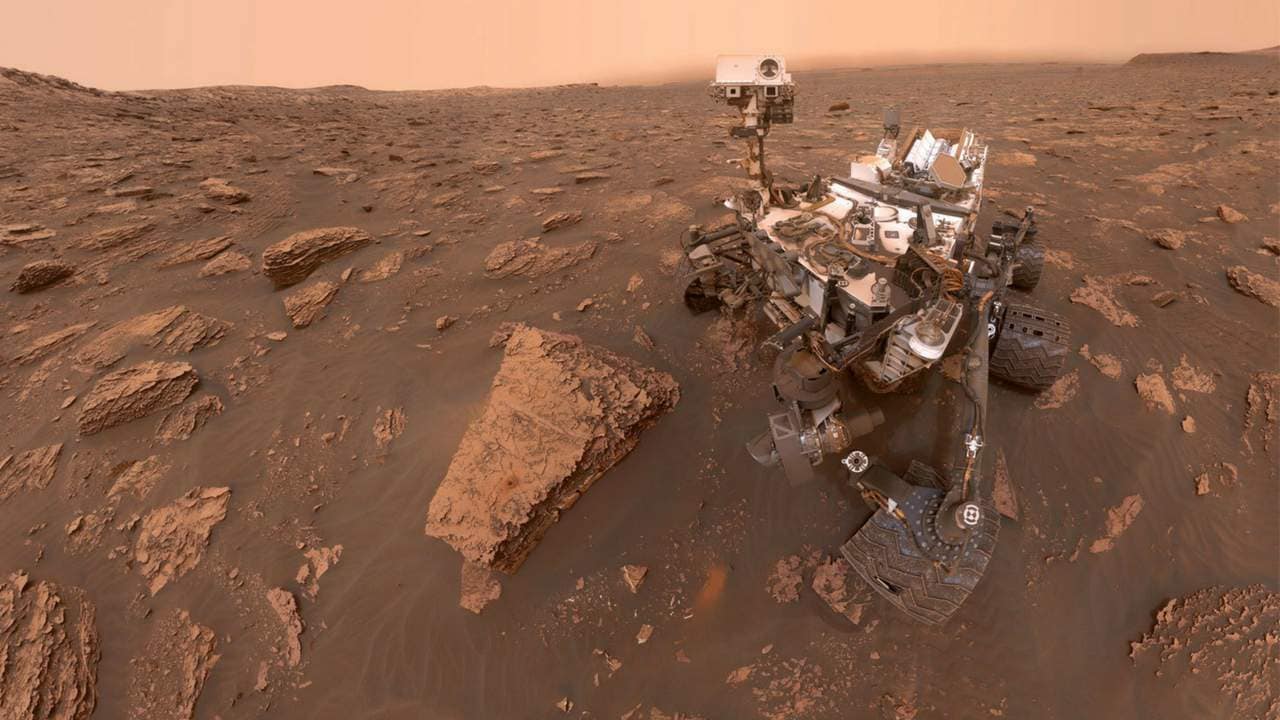NASA’s
Opportunity rover
has suspended all its science operations on Mars
following a storm of dust particles. The storm started about two weeks ago and has been growing, and has engulfed much of Mars. Curiosity Rover
, however, has been studying the Martian soil at the Gale Crater
and is expected to remain largely unaffected by the dust, according to a
report
by NASA from 20 June. [caption id=“attachment_4578931” align=“alignnone” width=“1280”] A self-portrait taken by NASA’s Curiosity rove. Image: NASA[/caption] The Opportunity rover draws power from the sun using solar cells, which are currently caked in dust. However, since Curiosity has a nuclear-powered battery, it runs day and night. Curiosity managed to snap and send a cool self-portrait to NASA just before the great Martian dust storm. The rover offers hope of answering a few questions regarding Martian dust storms. Researchers have been trying to find out why some Martian dust storms last for months and grow massive, while others stay small and last only a week. “We don’t have any good idea,” says Scott D. Guzewich, an atmospheric scientist at NASA Goddard Space Flight Center in Greenbelt, Maryland, who leads Curiosity’s dust storm investigation. [caption id=“attachment_4578921” align=“alignnone” width=“1280”]
A self-portrait taken by NASA’s Curiosity rove. Image: NASA[/caption] The Opportunity rover draws power from the sun using solar cells, which are currently caked in dust. However, since Curiosity has a nuclear-powered battery, it runs day and night. Curiosity managed to snap and send a cool self-portrait to NASA just before the great Martian dust storm. The rover offers hope of answering a few questions regarding Martian dust storms. Researchers have been trying to find out why some Martian dust storms last for months and grow massive, while others stay small and last only a week. “We don’t have any good idea,” says Scott D. Guzewich, an atmospheric scientist at NASA Goddard Space Flight Center in Greenbelt, Maryland, who leads Curiosity’s dust storm investigation. [caption id=“attachment_4578921” align=“alignnone” width=“1280”] Change in the color of light illuminating the Martian surface. Image: NASA[/caption] There’s little risk to the rover, confirm engineers at the NASA Jet Propulsion Laboratory in Pasadena, California. However, the largest impact is to the rover’s cameras. It’s freaky how the dust storm is turning everything blood red. Two images from the Mast Camera (Mastcam) on NASA’s Curiosity rover depict the change in the color of light illuminating the Martian surface since a dust storm engulfed Gale Crater. Martian dust storms typically stay contained in a local area. But the current storm is huge. If it were happening on Earth, it would be bigger than North America and Russia combined, says Guzewich.
Change in the color of light illuminating the Martian surface. Image: NASA[/caption] There’s little risk to the rover, confirm engineers at the NASA Jet Propulsion Laboratory in Pasadena, California. However, the largest impact is to the rover’s cameras. It’s freaky how the dust storm is turning everything blood red. Two images from the Mast Camera (Mastcam) on NASA’s Curiosity rover depict the change in the color of light illuminating the Martian surface since a dust storm engulfed Gale Crater. Martian dust storms typically stay contained in a local area. But the current storm is huge. If it were happening on Earth, it would be bigger than North America and Russia combined, says Guzewich.
NASA’s Curiosity manages a quick selfie just before the great Martian dust storm
tech2 News Staff
• June 23, 2018, 17:10:53 IST
NASA’s Curiosity studying the soil at the Gale Crater and is expected to remain largely unaffected.
Advertisement
)
End of Article